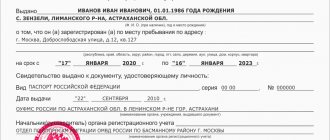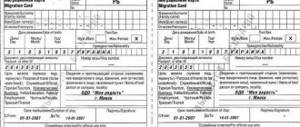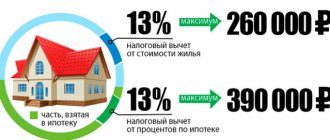As soon as the temperature drops by at least 10 degrees in the fall after the heat subsides, the apartments of many residents become cold. At this time, many people heat themselves with electrical appliances and activate air conditioners in heating mode. At the same time, everyone wants to know when the heating will be turned on.
Many citizens do not trust utility services and believe that they are deliberately trying to delay the heating season in order to save money. However, there are clear regulations that determine when the heating should be turned on.
Start of the heating season
To dispel the doubts of many citizens, it is enough to simply refer to Government Resolution No. 354 of 05/06/2011. This Resolution states (in paragraph 5) that the beginning of the heating season is determined by two factors:
- The air temperature outside drops below +8 degrees.
- This temperature lasts for at least five days.
If these conditions are met, and the temperature for five days is at +7 degrees, then on the next (sixth) day the radiators in people’s homes should be warm. By law, the heating season begins between October 1 and October 15. Unscheduled heating activation is possible if the above conditions are met. However, even if after October 15 the air temperature outside is about 10 degrees, the timing of heat supply to citizens’ homes may be delayed, so it is better not to rely on dates. It is necessary to take into account the average daily air temperature outside, which lasts for five days.
Who sets the start date for the heating season in Moscow
In Moscow, certain standards apply when heating is turned on according to the norms.
Heat supply occurs under the condition that for 5 days the average daily air temperature remains at the limit of 8 degrees and below. Even though it is still warm outside, the rooms begin to cool quickly.
According to weather forecasters, such temperatures in the Moscow region will not be established earlier than in the second ten days of October.
Several years ago, a rule was adopted according to which regional authorities have the right to decide to turn on heating prematurely if there are grounds for this.
In Moscow, the Moscow United Energy Company is responsible for the start of the heating season.
Thus, MOEK cannot begin supplying heat without receiving a corresponding order from the deputy mayor for housing and communal services.
Technically, heat can be supplied to one specific house, however, this practice is not common. Schools and clinics, hospitals and kindergartens are being connected in stages, and only then – at home.
At the very last stage, heat is supplied to enterprises - this depends on the degree of readiness of the organization itself.
According to available data, the average time to turn on the heating in Moscow is mid-October.
If five or more days have passed, it’s cold outside, and the heating is still not turned on, you need to file a complaint against the management company. The problem may be technical or economic.
In the first case, after checking the pipes by a specialist and replacing broken parts, the issue will be resolved.
Heating under contract
If residents are not satisfied with the conditions or time when the heating will be turned on, then they can draw up an agreement with the organization that services their home and supplies heat. The contract can specify a specific start and end date for the heating season. Then heat will be supplied to houses strictly according to the dates specified in the contract, and the air temperature outside will not matter at all.
However, such an agreement must comply with common sense, and the start and end dates of the heating season must be within reason.
About the heating fee.
According to Part 1 of Art. 153 of the Housing Code of the Russian Federation, citizens and organizations are obliged to pay for residential premises and utilities on time and in full. Who specifically has this obligation is stated in Part 2. This is:
- tenant of residential premises under a social rental agreement (agreement for the rental of residential premises of a housing stock for social use, state or municipal housing stock) - from the moment of conclusion of such an agreement;
- tenant of residential premises of the state or municipal housing stock - from the moment of conclusion of the relevant lease agreement;
- member of the residential complex - from the moment such a cooperative provides residential premises;
- owner of the premises - from the moment the ownership of such premises arises;
- the person who accepted from the developer (the person providing the construction of the apartment building) after the issuance of permission to put the house into operation of the premises in this house under the transfer deed or other transfer document - from the moment of such transfer;
- the developer (the person providing the construction of the apartment building) in relation to the premises in this house that have not been transferred to other persons - from the moment he is issued permission to put the house into operation.
Regardless of who is required to pay the housing and utility fees, this fee includes the utility fee. In turn, in accordance with Part 1 of Art. 157 of the Housing Code of the Russian Federation, the amount of payment for utility services is calculated:
- based on the volume of consumed utilities, determined by meter readings (if any);
- based on utility consumption standards (in the absence of metering devices).
Among the types of utilities provided to the consumer (the owner of the premises in an apartment building, a residential building, as well as a person using the premises in the house on another legal basis and consuming utilities), heating is included.
The consumer of the heating utility service, regardless of the chosen method of managing the apartment building, pays a fee for this service in aggregate, without dividing into the fee for the consumption of the specified service in residential or non-residential premises and the fee for its consumption for the purpose of maintaining common property in the apartment building. This norm is stated in paragraph. 2 clause 40 of the Rules for the provision of public services.
The procedure for determining the amount of payment for a heating utility service (clause 42(1) of these rules) depends on the chosen method of payment (during the heating period or evenly throughout the calendar year) and on whether the apartment building has thermal energy meters.
| Characteristic | Features of determining the amount of payment for heating utilities |
| There is no collective (common house) heat metering device (GMU) in the apartment building | The amount of the fee is determined based on the consumption standard for heating utilities and the total area of a specific premises (residential or non-residential) in the apartment building |
| The apartment building is equipped with a thermal energy control unit, but not all residential or non-residential premises in this building have individual and (or) general (apartment) heat energy metering devices (distributors) installed | The amount of payment in the premises is calculated based on the readings of the thermal energy control unit, the total area of a specific premises (residential or non-residential) in the apartment building and the total area of all residential and non-residential premises in the house |
| The apartment building is equipped with a thermal energy control unit, and in all residential and non-residential premises individual and (or) general (apartment) heat energy metering devices (distributors) are installed in it | The amount of payment in the premises is determined based on the readings of individual and (or) general (apartment) heat energy metering devices and the readings of the thermal energy control unit, the total area of a specific premises (residential or non-residential) in the apartment building and the total area of all residential and non-residential premises in the house |
Normal temperature in the house
Many residents demand that utility companies start the heating season, despite the fact that the air temperature in their apartments is normal. In this regard, citizens want to know at what temperature the heating is turned on in their apartments. SANPiN 2.1.2.1002-00 specifies the permissible temperature range in apartments for the cold and warm seasons. Compliance with the temperature ranges specified in SANPiN is a mandatory condition for home service companies, and if the temperature does not meet the standards, then you can file a complaint (we’ll talk about this below).
In accordance with the standards, the temperature in the warm season is 20-28 degrees for rooms. In cold weather:
- 18-24 degrees for rooms.
- 18-26 degrees for the kitchen, bathroom, toilet.
In addition to the permissible temperature, the optimal temperature range is also determined. These two concepts are different from each other. Acceptable is a temperature that does not contradict the rules. The optimal temperature is one that is close to the ideal value. With it, residents feel as comfortable as possible, so they are recommended to insulate the facades and do everything possible to maintain the optimal temperature in the apartment.
It is believed that the optimal value for rooms is 22-25 degrees in warm weather. In cold weather, the range of optimal values is lower – 20-22 degrees. In the toilet, bathroom, and kitchen, the optimal temperature is 19-21 degrees. It is these indicators that must be taken into account when determining compliance with air temperature standards in residential premises. We have almost figured out at what temperature the heating is turned on in apartments. But what if the utilities fail for any reason? You don’t have to suffer in a cold apartment if you suddenly don’t turn on the heating. Where to complain and what to do in this case?
Checking operation and trial run
Commissioning is aimed at bringing the heating into operating mode and bringing the system elements into compliance with the calculations. Includes three stages: trial run, adjustment and commissioning.
Commissioning work has the following sequence:
- The valve on the expansion tank opens;
- The water shut-off valves at the boiler open;
- The taps on the pump open;
- Radiator valves open;
- Mayevsky's taps are closed;
- If the system has a manifold, the valves open in it as well.
The system is then filled with coolant for the first time. To do this, connect the water hose to the appropriate tap at the boiler or collector. It is necessary to monitor the data on the pressure gauge: the operating pressure should be 1.5 atm. After filling the system with water, you need to properly bleed all radiators. For this purpose, Mayevsky cranes are used. The operating procedure is as follows: the tap opens, air comes out, when water starts flowing, the tap closes.
If the pressure drops due to the release of air, you need to add water. After this, the air is released from the pump, which has a special screw for this purpose. Then you can start the pump; its operating time should last 10-15 minutes. Every couple of minutes after turning on the pump, you need to unscrew the bleeder screw and monitor whether water flows out. If it flows, then everything is in order.
Important! When carrying out all manipulations, it is necessary to constantly monitor the pressure and, if necessary, replenish the system to the operating level of 1.5 atm. While the pump is running, you need to check all batteries again for air pockets.
If heat is not provided for a long time
In many regions, for any reason, heat may not be provided even after the onset of the heating season in all respects. In some cases, the heat supply stops altogether at the very peak of cold weather. Therefore, every tenant should know what to do if the heating is not turned on, where to complain, and most importantly, how.
So, first of all, you need to contact a company that supplies heat specifically to your home. This could be a homeowners association or a management company. Before contacting, you should make sure that the heating equipment is in working order. Considering that there is practically nothing to break in the batteries, you can skip this step and immediately proceed to report the lack of heat to the responsible company.
What to do if the heating is turned on, but the radiators are cold?
A familiar situation familiar to most Russian residents of apartment buildings - the heating season has begun, but the radiators still remain cold. What to do in such a situation?
- Go to your neighbors to find out if the radiators in their apartments are overheating. In the era of Internet development, you don’t even have to leave your apartment - ask this question on a portal or on a social network page in your city, indicating the house where you live. This way you will find out whether there is heat in neighboring houses; if there is, it means your system is airy, you need to bleed the air;
- If your housemates' radiators are already hot, and yours are cold, the radiators may be faulty, they have too much paint on them, and require replacement. But more often the situation is also caused by traffic jams in the system - you need to bleed the air yourself by opening the tap;
- In any situation where the available methods do not help, contact the management company - within 12 hours they must invite a specialist to fix the problem. Don’t be lazy to call the utility company to speed up the heat supply or at least find out about the stage of solving the problem.
Remember that you pay for heating in an apartment building and have the right to receive this service in full.
If the battery temperature is low, you can also file a claim with the management company, request recalculation and troubleshooting. It is better to do this collectively, together with neighbors, involving the public, the regional government and the media. Back to list Share: Send link
Filing a complaint
Alternatively, you can call a company representative and measure the temperature in the house in his presence using a regular thermometer. It is advisable to take measurements in each room, and if the readings do not fit into the permissible temperature range, then a report can be drawn up about the unacceptably low temperature. Further, with the attachment of this act, a complaint is filed against the management company, which is responsible for supplying heat to the house.
It is worth paying attention to the fact that a company representative can use his own thermometer to measure the temperature. It is necessary to ensure that the measurement is carried out at a distance of 1.5 meters from the floor and 1 m from the wall. If the thermometer readings seem suspiciously high, you can take measurements in parallel with your thermometer.
It is advisable to draw up the act that is attached to the complaint in the presence of neighbors. Let them also put their signatures under it. The complaint to the responsible organization must be submitted in two copies, one copy must be kept for yourself. The company representative must also sign two copies.
For each hour that the temperature does not meet the standards, the payment for heating is reduced by 0.15% of the payment (monthly). So it is in the interests of the management company itself to arrange heat supplies to the house as soon as possible.
When is the law not on the tenants' side?
It is worth noting that the law provides for emergency situations that may occur when setting up heating equipment in a boiler room. “Downtime” is possible for 24 hours (for a month in total) with a minimum temperature in the apartment of +12 degrees. If the thermometer drops to +10 degrees, then “downtime” is possible for no more than 8 hours per month. There may be no heating for 4 hours a month at temperatures below +8 degrees in the room.
These are the norms provided by law. And if during the course of a month residents experience frequent interruptions in the heat supply, then they definitely need to respond.
Is heating possible “with your own hands”?
Many residents cannot wait for the heating to be turned on. They try to independently adjust the heat supply to their home in different ways. Someone is digesting the pipe system, and someone is trying to connect it to the power supply.
Situations also often arise when residents replace indoor radiators with multi-section ones. This helps to insulate the room, but the rest of the residents suffer from this, since excess heat remains in the apartment of the person who installed the multi-section radiator.
Sooner or later, such interference will become known to the relevant services, and then the violator will face a substantial fine.









